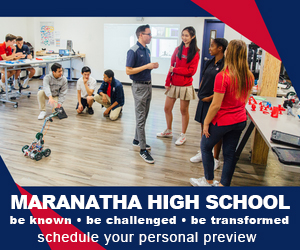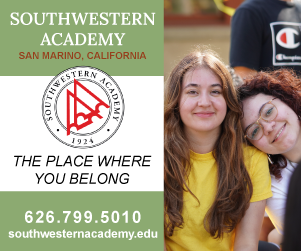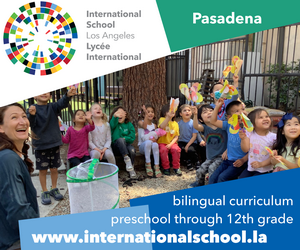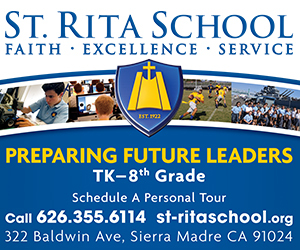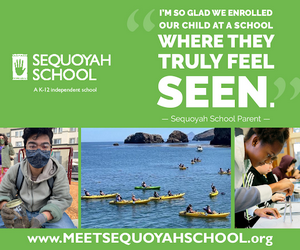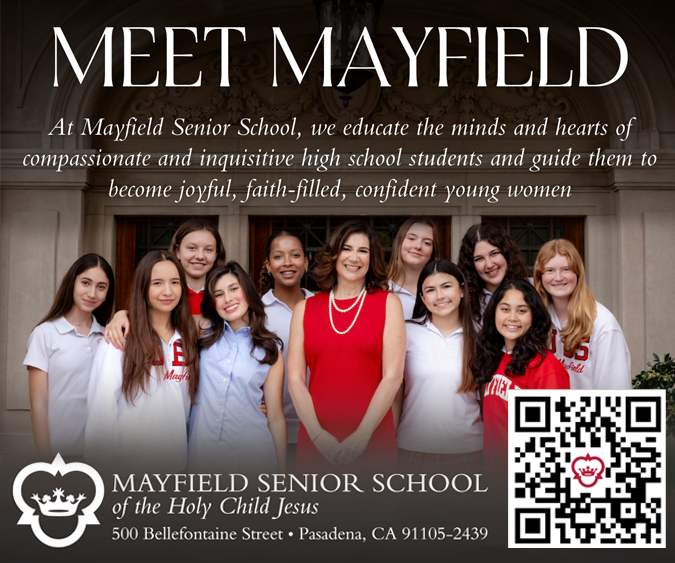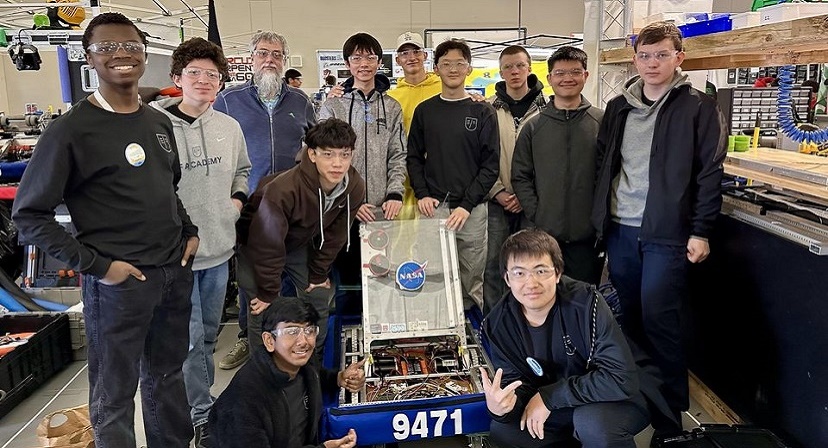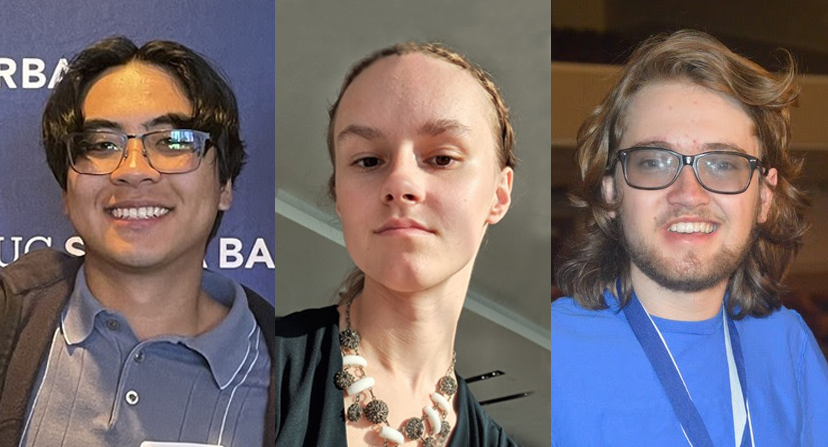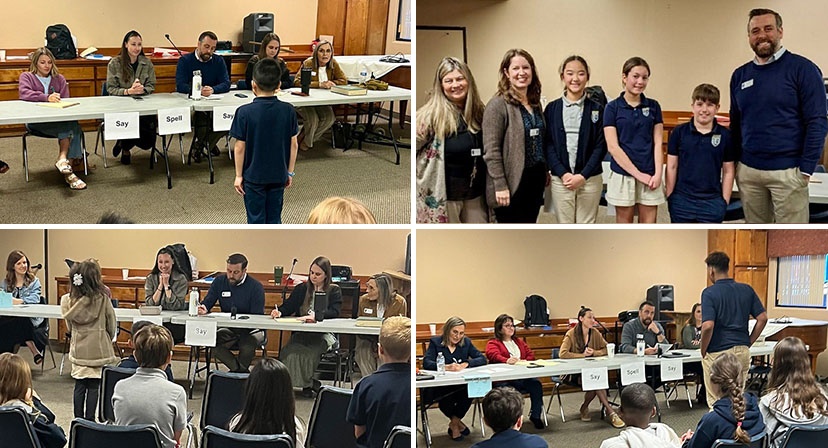Flintridge Prep Faculty And Staff Share Their Pandemic Experiences
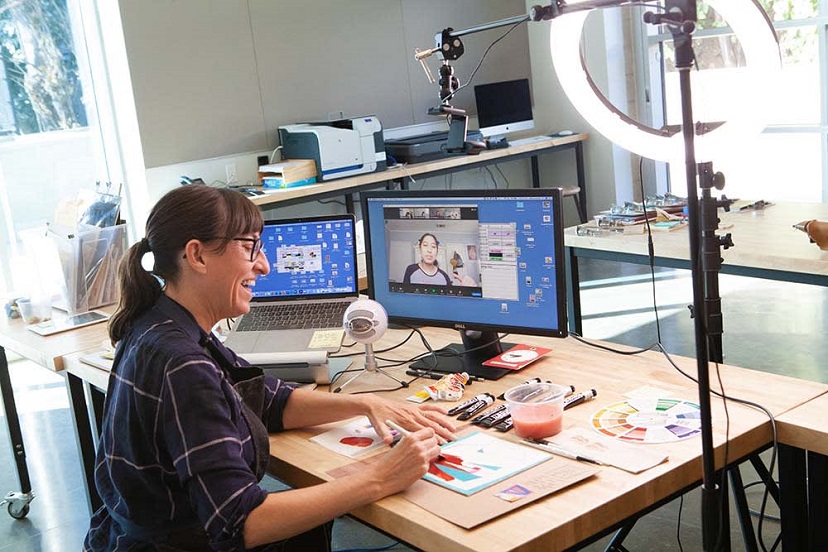
When asked for a word that best describes Prep, people often respond with “community.“ Everyone and every institution has a community, but what about Prep’s is so impactful on the lives of students, teachers, staff, alumni, and parents for multiple generations?
So much of what makes this community unique is the people who work, teach, and learn here, and the connections they build with each other. From the newest student or staff member to the most seasoned faculty member or alum, every person who passes through its halls and classrooms is dedicated to seeing the school and its people thrive. They contribute what and where they can to support this goal.
Often these contributions are visible: A teacher catches up with a student during passing periods or lunch to see how they’re doing; a lively discussion from history class spills over onto the Senior Patio; alumni across generations bond at reunions; parents volunteer at countless events.
Last year, all complex, intertwined, and dedicated connections to each other—connections that are most often rooted in in-person interactions—were tested. For many, life was not easy. Yet, while balancing their own anxieties and struggles, the people of Prep came to work and school remotely (and for essential employees, on campus) ready to learn something new, to adapt, listen, and support each other through a difficult time.
Teachers quickly tried to find out the best way to support the diverse needs of their individual students. Staff took on new roles and responsibilities. Students ran virtual Morning Meetings and reimagined traditions to keep us together. Parents and alumni contributed in powerful, unseen ways.
The collective experience last year was a bit like the Japanese artistic process of kintsugi. In this practice, gold or silver fill the cracks in a broken pot. The breakage is not forgotten, and the process of healing is memorialized, as the pot takes on a new chapter in its life. Like rivers of gold leaf, the work done by the people of Prep, often behind the scenes, were acts of healing that which might have felt broken, lost, or distant because of the pandemic. In acknowledging the magnitude of our experience, we also found our silver (or gold) linings.
The people you meet on these next pages are only a few of all the staff, faculty, and administrators who work hard, every day, to nurture the best possible Prep experience for everyone.
Andrea Cardenas, Dining Services Staff
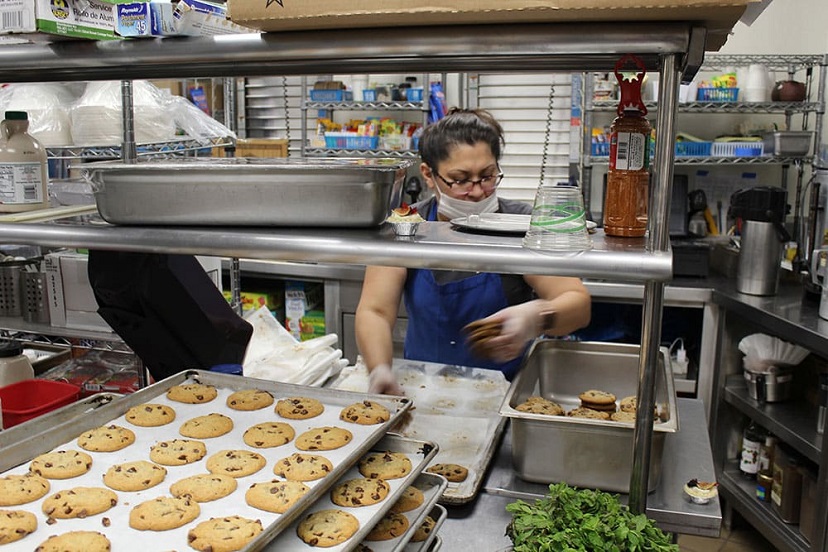
Without students and teachers on campus, our Dining Services team had no one to feed. They transitioned into new roles to support the school, addressing the new needs within our new normal. “We always spend summers working with Facilities, once summer school is over, helping them get the campus ready for the fall,” Andrea Cardenas shares. “This past year was different.”
Throughout the summer of 2020 and the 2020-2021 school year, the Dining Services team was busy every day. When L.A. County safety guidelines permitted, they provided prepackaged meals for all essential staff and faculty. They assembled—and distributed—all the care packages students received last year, from Book Day to the Winter Movie Drive-In. They also joined forces with the Facilities team in disinfecting and sanitizing the campus for essential employees and eventually for hybrid learning.
Cardenas and her colleagues worked every day with the Facilities team, led by Norma Basilio. “I was active all day long. Norma had a routine for us daily. We were trying to maintain the school for the staff that was here and make sure everything was constantly cleaned. On top of that, we were keeping up with all the changes to rules, what the school needs…every day there was something happening that we were managing,” Cardenas says.
The restaurant and dining industry overall suffered through layoffs, overwork, and fluctuating protocols, which Cardenas watched with empathy and gratitude, as Prep never furloughed or laid off anyone as a result of the pandemic.
“COVID is very sad, and you start thinking you’re really fortunate. I appreciated life much more and all the stuff I was doing. I like to keep busy. You come in, you do your work, and you do it well, no matter who sees you. You do it well,” she says.
Through the windows at the Prep Kitchen, Cardenas is a support system for many students. “I get to know them starting from summer school through graduation. They stop by the kitchen, and I get to know their names,” she says. “Pretty soon, I’m always seeing them, they come by and talk with me because I’m very easy to talk to. I’m a mom. I notice when kids are going through things and I try to give them advice, always about doing the right thing.”
Even though her work for much of last year was active, it was quiet. “After a while, though, I kept missing the people. Seeing people, even just a hello, makes a difference,” she shares.
Shane Frewen, STEAM Coordinator
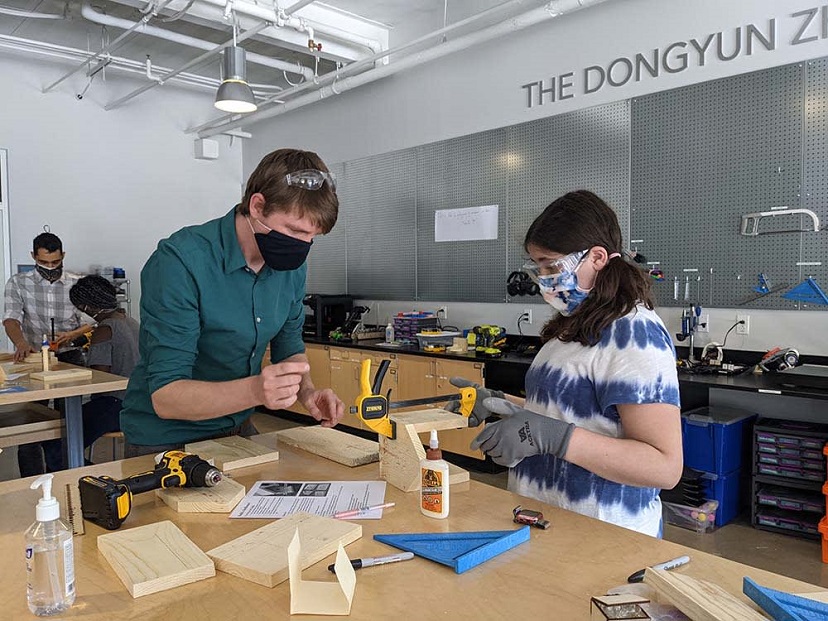
Dr. Shane Frewen took full advantage of the accessibility that last year’s fully remote world offered, transforming the STEAM & Service Fair into a dynamic virtual event. All student research, Community Impact Projects (CIPs), and faculty projects were shared on a website Frewen built, allowing more community members than ever to attend the fair. He also turned a long-held dream into a reality, as teachers, staff, and students led interactive workshops on Zoom, engaging fair attendees with live dissections, kirigami lessons, 3D printing of hooks, and citizen science.
“The fair is not a one-person job, and last year, it was the same—it required a lot of people working together,” Frewen notes. “Laura Kaufman gathered all the AP Biology projects. Hilary Thomas helped the CIP students. David Herman spearheaded the science fair research component. Susanna Kwan coordinated all the virtual meetings. Teachers created Padlets or microsites for their projects. I created the website, troubleshooted, and made everything visible for everyone. So many community members contributed, whether it was leading workshops, doing awesome projects, judging projects, or helping students.”
Frewen plans to continue the interactive workshops at the 2022 STEAM & Service Fair and to showcase community work in the Bachmann Collaboration Building. In a year and a half of challenges, Frewen finds the positive.
“I remember near the end of last year, when we returned for hybrid learning, I was in the Makerspace after school one Friday. There were four or five diffferent student groups. Clarice Pranyoto ‘21 was doing an independent study engineering project. The Girls Who Code and the Competitive Computer Science clubs were meeting. A group of students were using the embroidery machine, and another was working with the vinyl cutter,” Frewen muses. “There was this energy, this vibrancy, with all the conversations happening between students, teachers, staff. It’s those really beautiful moments of joy and spontaneity that I missed. Saying hi to students in the hall, asking them, ‘How did your game go?,’ congratulating a student on their play performance…just that organic opportunity to stop and talk with a student or colleague is so powerful.”
Norma Basilio, Head of Custodial Services
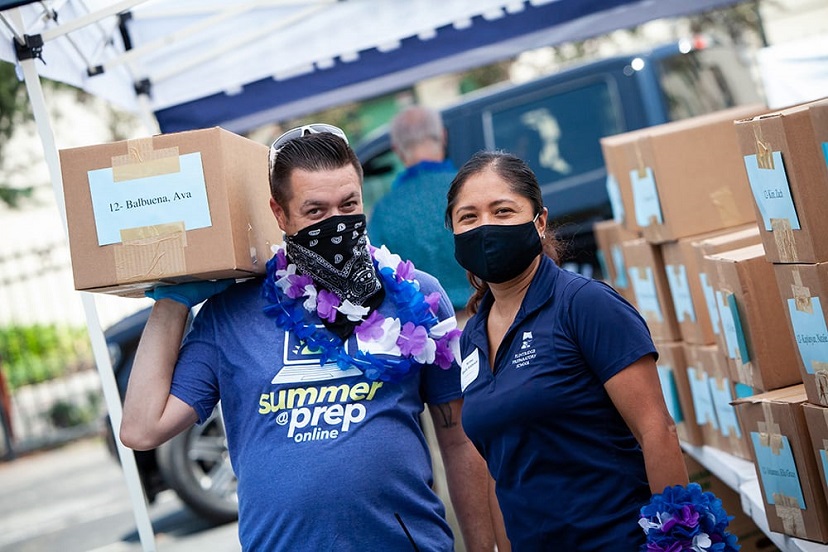
For Prep’s Facilities team, working from home was not an option. “The work we do is physical,” Norma Basilio says. “While other people can work from home on their computers, everything we do is physical, on-campus work.”
The Facilities team expanded when the Dining Services crew joined them. Basilio managed these teams as they started every day at 7:00 a.m. implementing the extensive cleaning protocols. Once students returned for hybrid learning, the disinfecting and sanitizing increased twofold. “We were cleaning and disinfecting door handles, bathrooms, lunch tables, and desks multiple times a day,” says Basilio. She and Director of Facilities Nick Adams-Wright spent countless hours learning new guidelines, planning out sanitizing stations, and researching the best cleaning supplies.
“This work was different. We needed to make sure we were following all instructions and protocols that were changing a lot,” shares Basilio. “It might sound simple, the work we’re doing, but I want to make sure we’re doing the right thing for everyone. I want to protect myself and I want to make sure others feel the same—I felt, I feel responsible.”
A calm, reassuring presence, Basilio leads her team with empathy, and that same empathy informed how hard she and her team have been working. “We’ve tried to do the best for the school. We tried to do the best not just for us, but for everyone. We pushed ourselves,” Basilio says. “We are always busy, and it was good to also have different experiences. For the first time, we got to be part of activities and events since there weren’t many people on campus. I’d never worked at Book Day, and I got to hand things out to the students. We helped put together all the furniture in the new Bachmann Collaboration Building. These all helped me to learn more and were part of us just helping each other.”
Molly Mattei, Performing Arts Chair
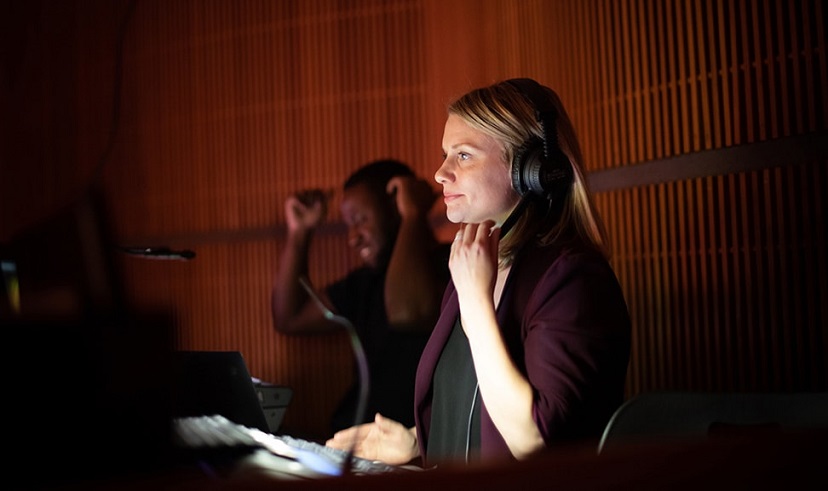
“The main thing we were all concerned about were virtual performances,” Molly Mattei says about the Performing Arts team. “We were asking a lot of questions. How do we do that? How do we showcase the students’ talents in a way that shows how much they’ve learned? How do we do it all at home?”
In music classes, students rehearsed on Zoom while muted. In dance classes, asynchronous movement and prerecorded dances stitched together became the norm. In drama classes—and frankly, all classes—mental health and wellness check-ins and journaling took the spotlight. The department also hired video editors to help create the virtual performances our community enjoyed, including dance and music concerts and the spring musical, Cinderella.
Even with the professional editors, Mattei, her fellow teachers, and the students faced additional challenges.
“We couldn’t actually sit with the editor while they were working, making it 10 times more work and more communication for this back-and-forth process,” Mattei says. “For the students, normally, they are the performance. Last year, they were recording themselves at home, sending it in, and they didn’t have any idea what was happening behind the scenes or what the final product would look like.”
The limits on many art forms and industries from hosting live shows and performances reminded all of us of the magnetism of seeing art in person. “A lot of art and performance is live, and mistakes happen and things shift, and that’s all part of the magic. But the students now had this control over recording themselves, and it brought out a lot of insecurities that their performance needed to be perfect. Because they could do as many takes as they needed, it was challenging for the students to send something in and feel good about it,” Mattei explains.
Mattei and her Performing Arts colleagues, as well as many teachers, found themselves doing more emotional work than they’ve ever done with their students. “For my dance students, I reminded them that even professional dancers are not happy with everything they do. We talked a lot about how social media affects that—we see the final products that are perfect, but for the students, it was eye-opening to have the experience of doing 50 takes, and that the one that went well is the one they might see up on social media,” she says.
Mattei’s focus last year and this year is less on the result or product. “It’s really about how we’re all doing right now. Is everyone okay? The idea of expectations and perfection within performing arts is huge, so everyone really took a step back and said, the performance is not our main goal. It’s making sure everybody was okay.”
Sylvie Andrews, Chief Information Officer
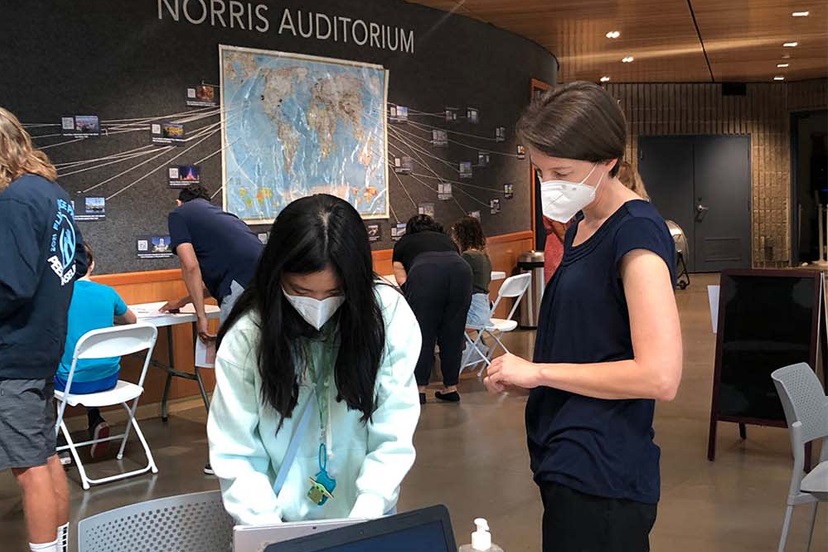
“Whenever I set up a new system at Prep, the student in the classroom is in my mind and in my heart throughout the process,” Sylvie Andrews notes. This thoughtful approach to technology could not have been more useful over the last few years.
In the school years preceding the onset of the COVID-19 pandemic, the school had rolled out a major Bring Your Own Device (BYOD) initiative to ensure that all students had laptop technology. This work proved to be prescient, as the school was forced to transition to what was initially thought to be a brief period of online learning in March 2020.
As the pandemic continued through the spring and fall of 2020, the Tech team collaborated with teachers and staff, testing out cameras for multiangle views, installing new interactive projectors for every classroom, and retrofitting the school’s tech infrastructure.
The team also oversaw the installation of audio/visual tech throughout the Bachmann Collaboration Building, which was completed in the midst of the pandemic. Because of the careful planning and work done while most of the school was closed for business, the school transitioned smoothly to hybrid learning and is now set up for a whole host of new virtual connectivity opportunities in the future.
“You would think our work was remote, but we had to be here to handle the hardware, manage infrastructure, internet and WiFi connections, and support our essential faculty and staff who were working on campus,” says Andrews. The pandemic coincided with a robust expansion of the team, with additional staff members brought on to aid with all campus technology needs. IT Support Specialist Michelle Correia joined in summer 2020, and Tech just brought on two new employees, Tech Operations Manager Nicole Ricalde and Information Systems Specialist Jess Moxley, in 2021.
Andres Alamillo, Athletic Trainer
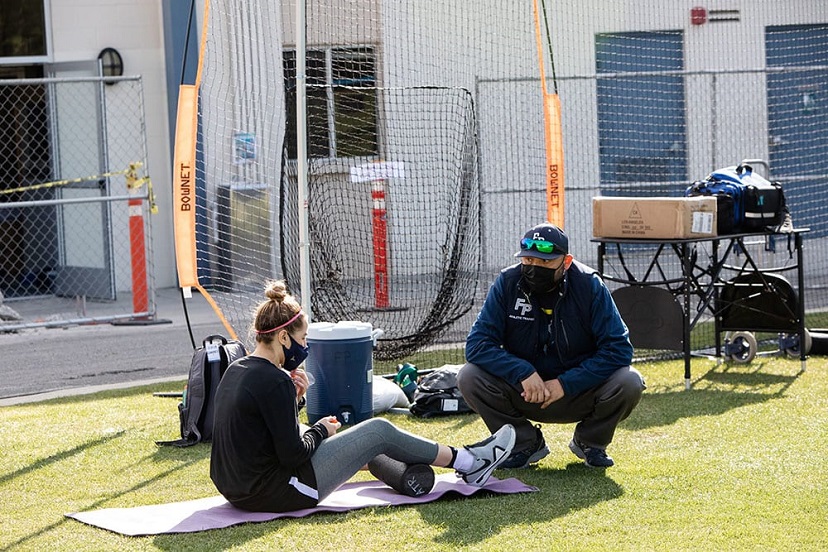
Before COVID-19, contact tracing, and surveillance testing became household terms, Andres Alamillo was already focused on the health and safety of our community. Treating athletes daily, as well as dancers and performers, crafting customized physical therapy and workout regimens, advising coaches on hydration and safety techniques, organizing athletes’ health forms, coordinating cognitive health checks and concussion tracking…the list goes on.
In March 2020, Alamillo swiftly added interpreter of federal, state, and local COVID-19 guidelines to his responsibilities, alongside the entire COVID-19 School Compliance Task Force. “Basically, I’m the health care provider for these athletes and my role just expanded largely, interpreting LADPH guidelines, using my background in medicine to interpret them, trying to understand, ‘What does this mean?’ We have to decide, what’s going to be our best practice?” he says.
For the past year and a half (and for the foreseeable future), Alamillo, the Task Force, the Athletics Department, and the Physical Education Department have had to keep up with the rapidly changing guidelines for sports. “Guidelines would change weekly,” Alamillo says. “For example, LA County would put something out on a Friday afternoon. By Monday morning, they’d change it a little bit and by Monday afternoon, the guideline would be down. On Tuesday afternoon, they’d upload a completely new guideline. It was that quick. We would all be preparing for one thing, and then have to start on a completely new guideline immediately.”
His athletic training work changed as well. The old training room was quite small, so Alamillo moved everything outside. “Being outside was a blessing for treatments, as I didn’t have to limit how many people I could treat. It helped with that part of my job. It would have been a lot more challenging if I was in that old training room,” Alamillo says. This past summer’s renovations to the gym created an expanded athletic training room and office for Alamillo. His team expanded as well, adding Kylie Snyder as the assistant athletic trainer this fall. In recognition of his dedication to the community, Alamillo received the 2021 Scott Studenmund ‘08 Memorial award.
Remembering Melissa Kobe, Photographer and Friend
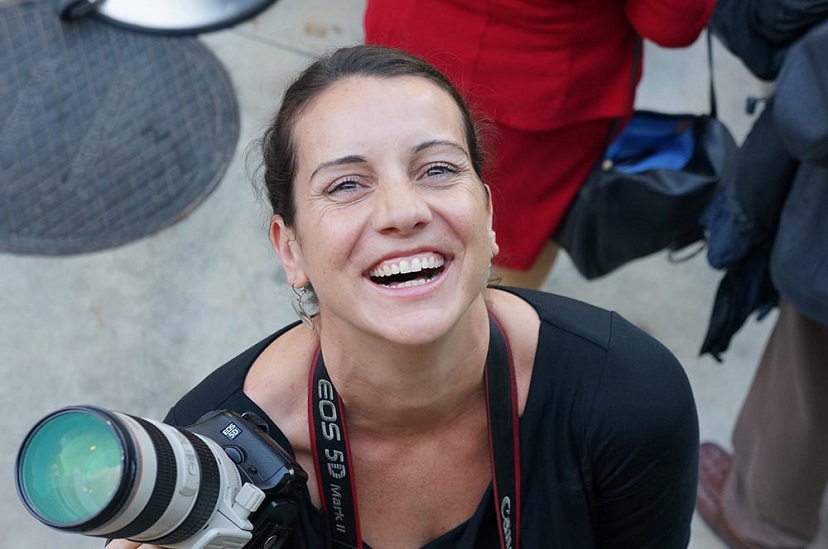
In an issue of our magazine that describes the work done behind the scenes, we would be remiss if we didn’t acknowledge one of our chief documenters, Melissa Kobe, who died on June 16, 2021 while hiking the Pacific Crest Trail in extreme weather. Melissa’s lens captured school events and campus life at Prep for nearly a decade, and her work this past year chronicled the challenges and triumphs of life during a pandemic. Born in Salt Lake City, UT, Melissa was an accomplished artist known for her photojournalistic, documentary style. Her work was seen across Pasadena and Los Angeles. She worked with and donated to several nonprofit organizations, and had been working on The Feminine, a multiyear project with poet Sarah Suzor. Though her big personality made her seem larger than life, those closest to Melissa appreciated her subtle eye when taking photos, her matter-of-fact honesty, and her quiet but powerful observations. She is survived by her parents, Jack and Denise, her sister, Erin Fox (Trevor), nephews Atticus and Elliot, and her partner of 22 years, Kevin Campbell.
Flintridge Preparatory School, 4543 Crown Ave., La Cañada Flintridge, (818) 790-1178 or visit www.flintridgeprep.org.





